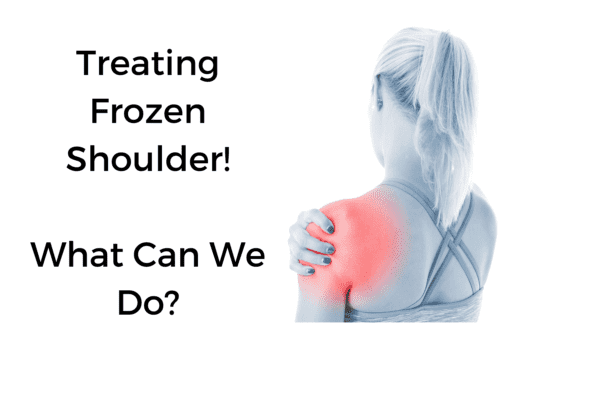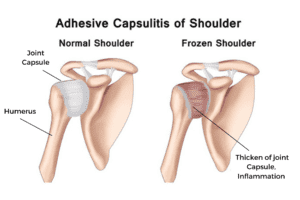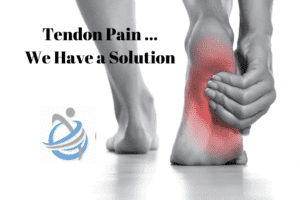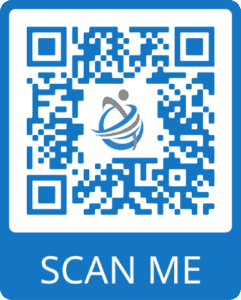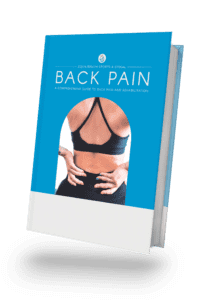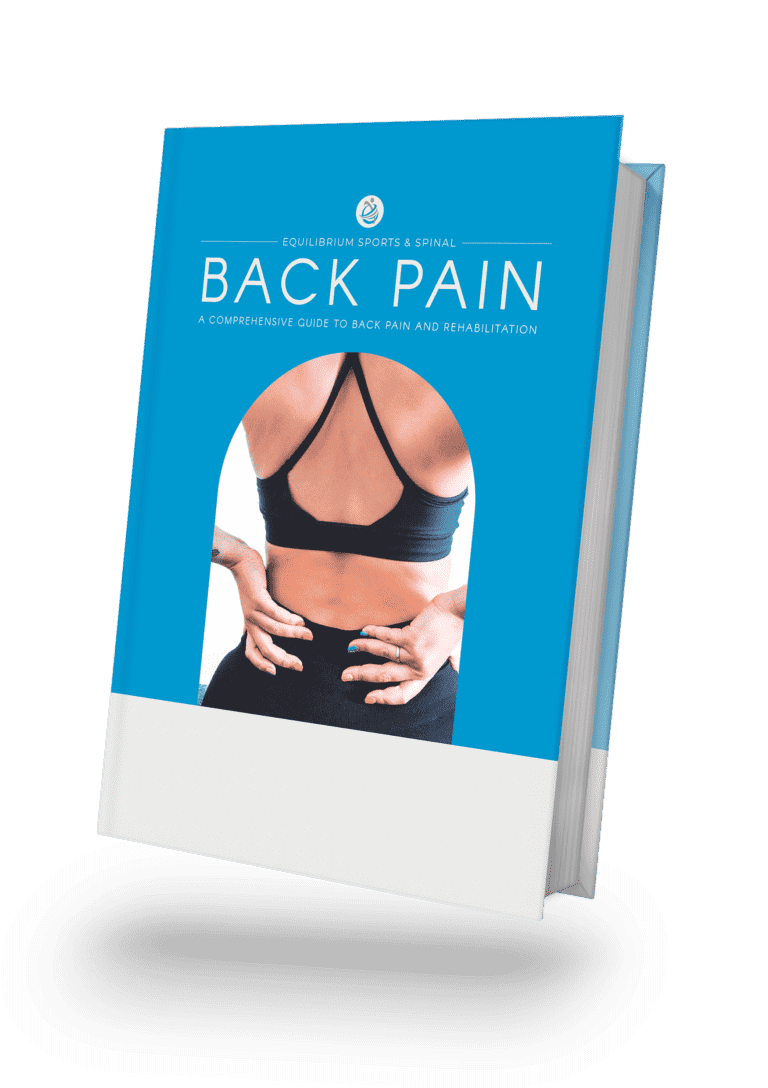Frozen Shoulder (also known as adhesive capsulitis) is a well-known condition to many. For the majority of us, getting dressed washing our hair, and reaching upwards are simply daily tasks. But for someone suffering from a frozen shoulder, these simples tasks can be impossible. And often extremely painful. Unfortunately, we don’t know much about this frustrating and often debilitating condition. Frozen shoulder as the name might suggest is categorized by stiffness or limitation of the range of motion of the shoulder joint. And is often accompanied by extreme pain.
Shoulder Anatomy:
Your shoulder is a ball-and-socket joint made up of three bones: your upper arm bone (humerus), your shoulder blade (scapula), and your collarbone (clavicle). The Humerus, the “Ball” fits into a socket on your shoulder blade to create this ball and socket joint. It is held together by a strong connective tissue known as the capsule. To help move this joint more easily, there is a fluid (synovial fluid) within the joint and bathes the capsule.
What Causes a Frozen Shoulder:
The experts are not 100% sure on what or why some, of us, develop a Frozen Shoulder.
What we do know is that for some reason the shoulder joint and capsule become inflamed and thickened. As a result of this inflammation, there is guarding of the joint. When the joint doesn’t move, the capsule surrounding the Gleno-humeral joint eventually thickens, contracts, and loses its normal capacity to stretch. This may also be associated with a reduction in the lubricating fluid ( synovial fluid). This in conjunction with less space for the humorous to move, results in loss of range of motion, pain, and stiffness.
Other factors that may contribute to developing a Frozen shoulder are:
- Diabetes. Those suffering from diabetes are more prone to Frozen Shoulder. Why? We don’t know. What we do know they do also tend to take longer to resolve.
- Other diseases including hypothyroidism, hyperthyroidism, Parkinson’s disease, and cardiac disease all seem to be a common thread with those suffering from Frozen Shoulder.
- Immobilization. There does seem to be some evidence to suggest that a Frozen shoulder can develop after a period of immobility. That is, after the shoulder has been immobilized for a period of time. After surgery, a fracture, or another injury has occurred.
A frozen shoulder usually develops in 3 stages.
Stage 1: Freezing
The “freezing” stage. Most often associated with pain. As the pain progresses, your shoulder loses range of motion. As the pain worsens, your shoulder loses range of motion. This stage typically lasts approximately 6 weeks to 9 months.
Stage 2: Frozen
Here we see a severe restriction in daily activities. Interestingly though pain may actually improve during this stage. However, the stiffness remains. This stage often lasts approximately 4 to 6 months.
Stage 3: Thawing
The light at the end of the tunnel. Shoulder motion slowly improves during the “thawing” stage. An improvement in range of motion, and pain reduction. A return to somewhat “normal strength and range of motion can occur, with a time frame of approximately 6 months to 2 years.
Frozen Shoulder Symptoms:
- Pain, often worse at night
- Stiffness — even raising the arm may be impossible
- Limited range of motion
Who is at Risk of a Frozen Shoulder?
Sadly, we are not 100%. The researchers suggest that those aged between 40-60 and female seem to be in a higher risk category. What we do know is that those suffering from Diabetes are more prone to Frozen Shoulder. Why? We dont know. What we do know they do also tend to take longer to resolve.
Other diseases including hypothyroidism, hyperthyroidism, Parkinson’s disease, and cardiac disease all seem to be a common thread with those suffering from Frozen Shoulder.
Immobilization. There does seem to be some evidence to suggest that a Frozen shoulder can develop after a period of immobility. That is, after the shoulder has been immobilized for a period of time. After surgery, a fracture, or another injury has occurred.
What Can Be Done?
A successful outcome lies heavily in a correct diagnosis. To ensure we arrive at an accurate diagnosis, a comprehensive case history and thorough physical exams are vital. Other shoulder conditions need to be excluded. Conditions such as tendon injuries, joint problems ( such as AC joint injuries), or Osteoarthritis. These conditions can all present as shoulder pain and stiffness.
Our number priority is relieving your pain. Restoring your mobility. And getting you back doing the things you love. We do this via a combination of:
- Gentle hands-on mobility.
- Dry needling techniques.
- Soft tissue massage.
- Joint articulation, mobilization, and stretching techniques.
- Shockwave Therapy
- Exercise Rehabilitation
The key to ensuring your long-term health and wellness is a specific strengthening and mobility program. Restoring your range of motion and muscular strength are hallmarks of this program.
Over the years our osteopaths have seen great success with the use of Shockwave Therapy. A non-invasive, quick, and effective treatment protocol. It has shown to dramatically improve the range of motion, reduce pain levels, and speed up the healing process.
Frozen Shoulder Exercises:
In order to get you back on the road to recovery, we need to improve the mobility of your shoulder. We do this with a combination of stretching and mobility exercises. Here are a few of our favorite exercises to help treat those suffering from a frustrating and debilitating condition.
Beginner Exercises:
Towel Stretch:
Dowel Stick Mobility:
Pendulum Exercises:
This safe and gentle exercise allows the arm to move freely while adding in some traction. NOTE – all the movement should come from the trunk. Your arm should stay relatively relaxed.
Intermediate Exercises:
Seated Theraband Row:
Advanced Exercises:
Swiss Ball Roll Out:
This is an END stage exercise. Always check with your health care provider before attempting this exercise.
A frozen Shoulder is a frustrating and debilitating injury. Seeking the right advice and guidance is essential to overcoming this painful condition. If you are suffering from a Frozen Shoulder and need help. Please reach out! We are here to help.
If you have any questions or would like to talk to one of the Osteopaths at Equilibrium, please email us at info@equilibriumsas.com.au and we would be more than happy to talk to you about your condition.


